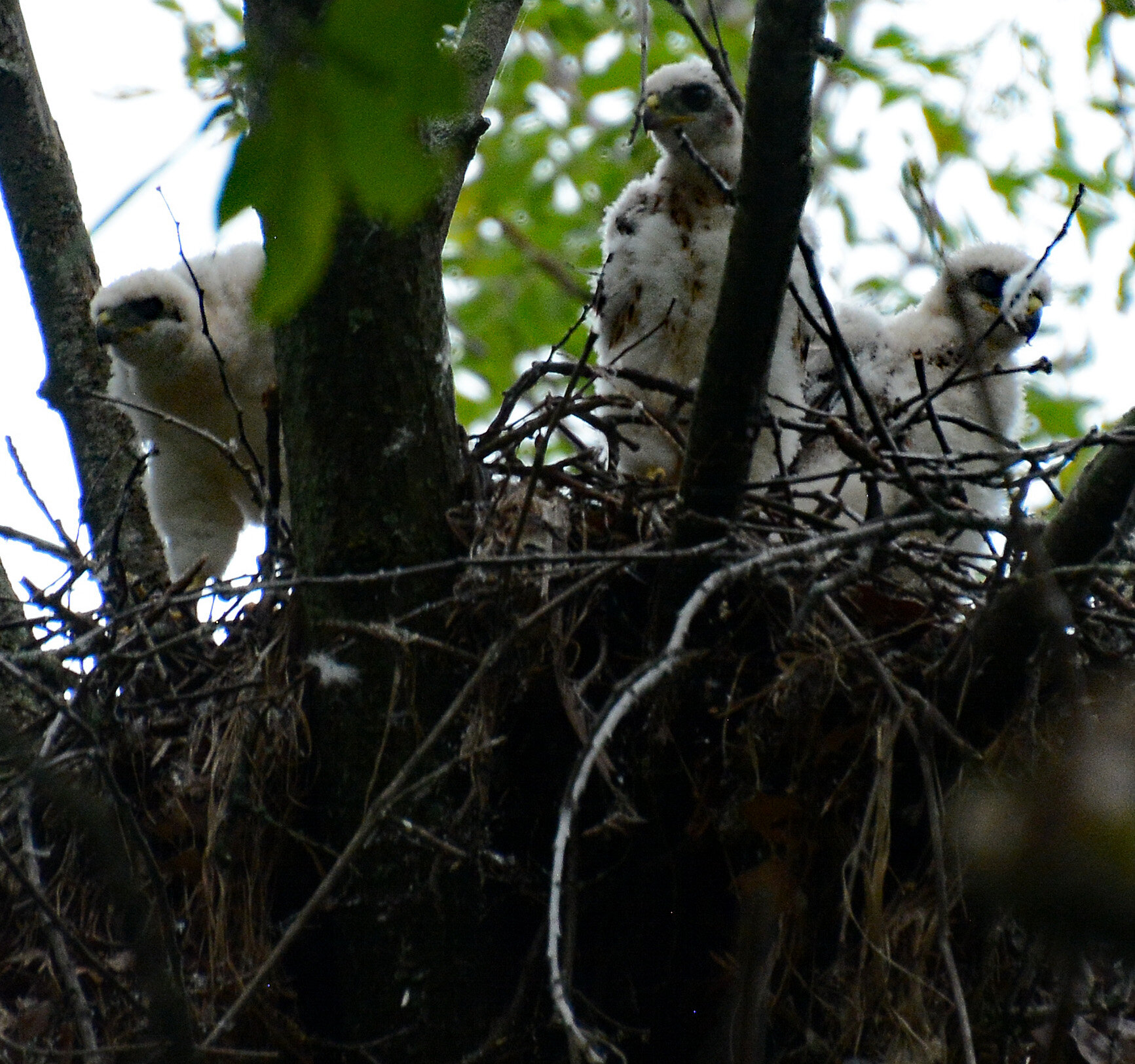The Cooper, The Crow, and the Chickadee
My introduction to the Cooper’s Hawk on Belle Island was its call. “Kek! Kek!” It came cracking through the bony fingered forest canopy in the cold February air. I wheeled around to follow the sound. “Kek!” Another small hawk, the size of a crow, flashed by, with a long tail and wide bands. It was unmistakably a Cooper’s Hawk, the skilled and fierce predator of other birds. Outside of breeding season coops are considered solitary. These two were pushing spring.
My relationship to crows is long. I talk to crows because they talk to me. Years ago, one stopped to say hello. It turned from its mates to face me, trading a typical ‘caw’ for an odd ‘uh-oh.’ I interpreted it as a greeting. “Hello,” I said, mimicking its lower pitch on the second syllable. The next time we met I changed the somber ‘hello’ to one that was more cheerful. He repeated it back with the raised pitch intact and we were fast friends.
I’ve known chickadees longer, taking delight as a young boy watching them pluck seeds out of my hand. Gossipy creatures, they tell everyone’s business to any who will listen. Especially the Cooper’s Hawks’ business.
As spring marched through April, I was sitting at my desk when I noticed a movement in the clump of cedars across the street. It was sunset and a bird had taken roost. I went outside to take a closer look. It was a young female Cooper’s Hawk. For nearly two months she secreted herself nightly in the dark inner sanctum of the cedars, safe from the bossy crows. Each morning just before sunup, she raced for Belle Island.
April is breeding season for crows, two weeks ahead of the coopers. They had a messy stick nest high in an oak tree where they were quiet and discrete. One morning, walking under the nest, I watched a crow chase off another bird. Was that a Cooper’s Hawk?
More coop’s calls and sightings made me think that they must have a nest nearby. It was breeding season for them too. Threading my way along the forest edge I carefully searched the canopy. Five minutes later I found their nest.
Six trees over were the crows.
“This could be interesting!” I thought.
But it wasn’t. While the crows were incubating, the coops were still nest building. Two enemies with overlapping territories. The forest was eerily silent, each bird chasing the other as a matter of routine. When the coop was finally incubating, the crows were feeding young.
Crows’ mobbing intensifies according to the level of threat. A female coop might take out a crow but it’s not her first choice. The crows will yammer at the perched coop, with distracted lulls in the action. Some crows, not all, will follow her if she takes flight. Crows will harass a Red-tailed Hawk on the wing, a greater threat, and when it lands, they will sternly warn it off, but will quickly lose interest. On the other hand, Great Horned Owls are a greater threat to crows. They will mob it nonstop when perched or in flight.
Cooper’s Hawks and chickadees have a more complicated relationship.
One fall afternoon I was feeding the chickadees when the forest suddenly went silent. A chickadee had stretched herself upright on a nearby branch making herself as thin and still as she could with only her black eyes darting left, right, up, down. What’s going on? I looked up just in time to see a Cooper’s Hawk slip silently through the leafy tree tops. Once she was gone the chickadee behaved as if nothing had happened. I have also seen a host of small song birds mob a coop, chasing it away as if they knew it was in predatory mode. At other times the chickadees seemed fearless in the presence of a coop. Do they know it is midmorning when the coops have fed and are preening and therefore non-threatening? Or do they know that their small size makes them safe?
What birds know is incredible. Many factors go into predation and security: season, territory, contentedness, hunger, place, risk and even the time of day. They need to know not only who is their predator but also who are their allies, competitors, guardians and sentinels.
If you want to know where the Cooper’s Hawk is, ask the crow. If you want to know what it’s doing, ask the chickadees.





